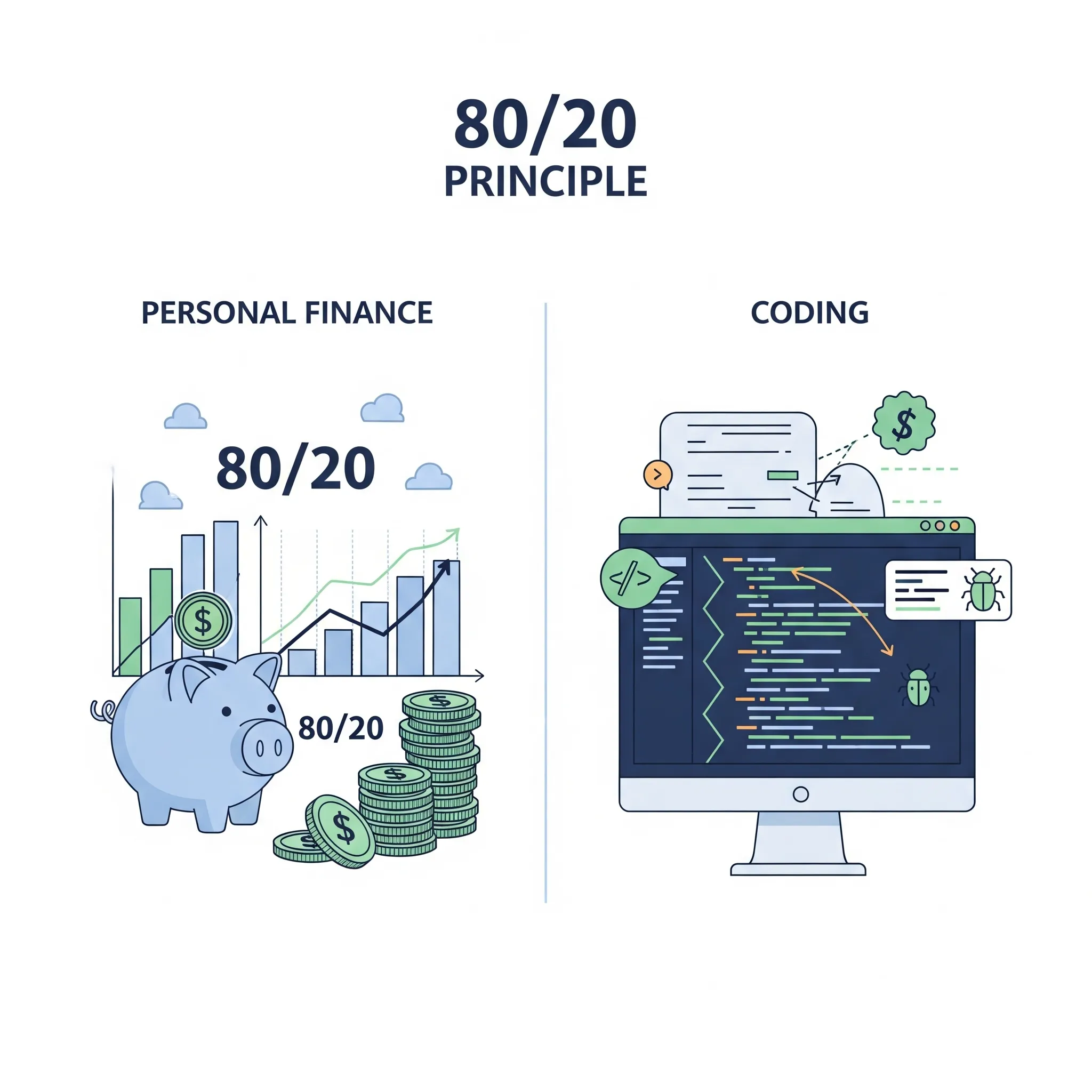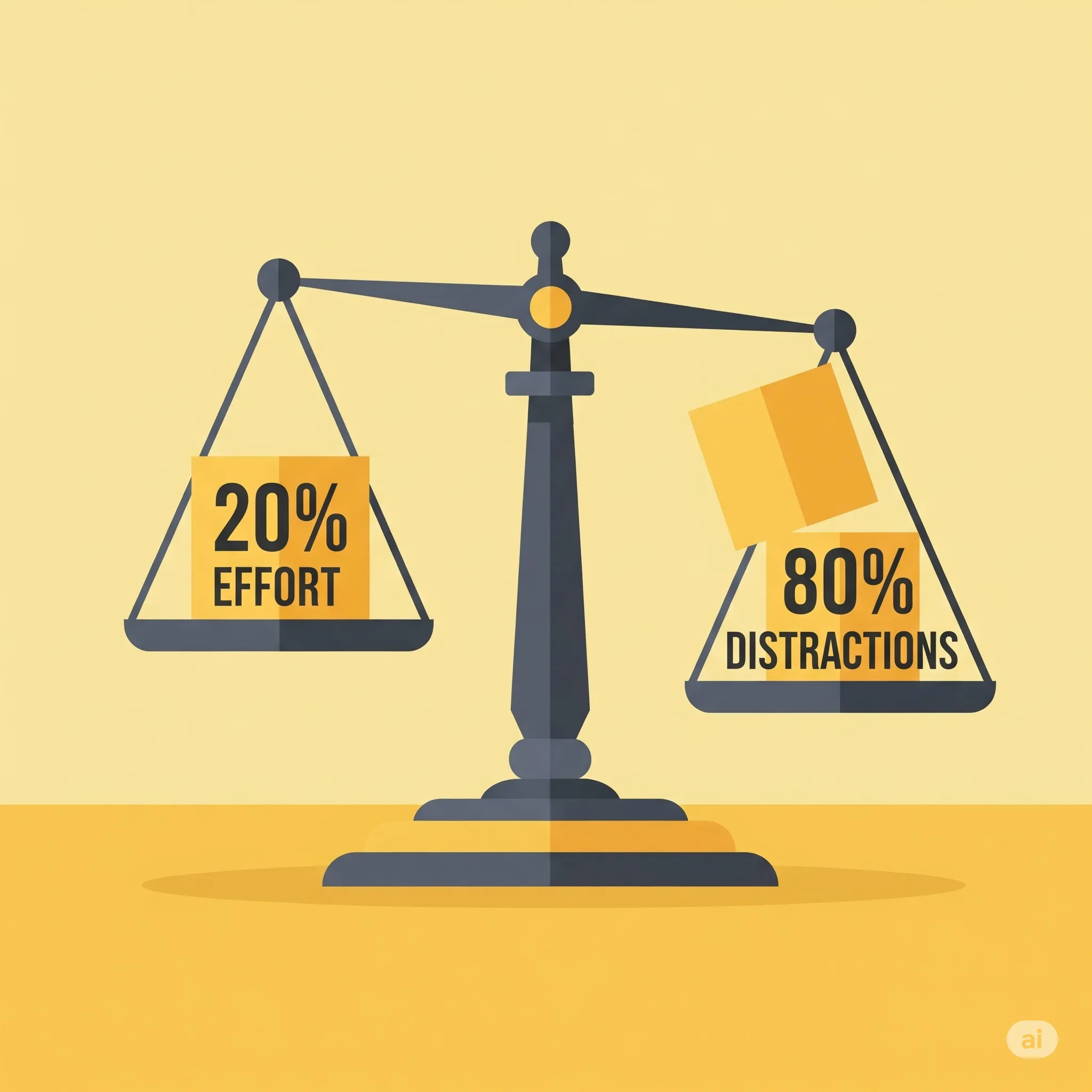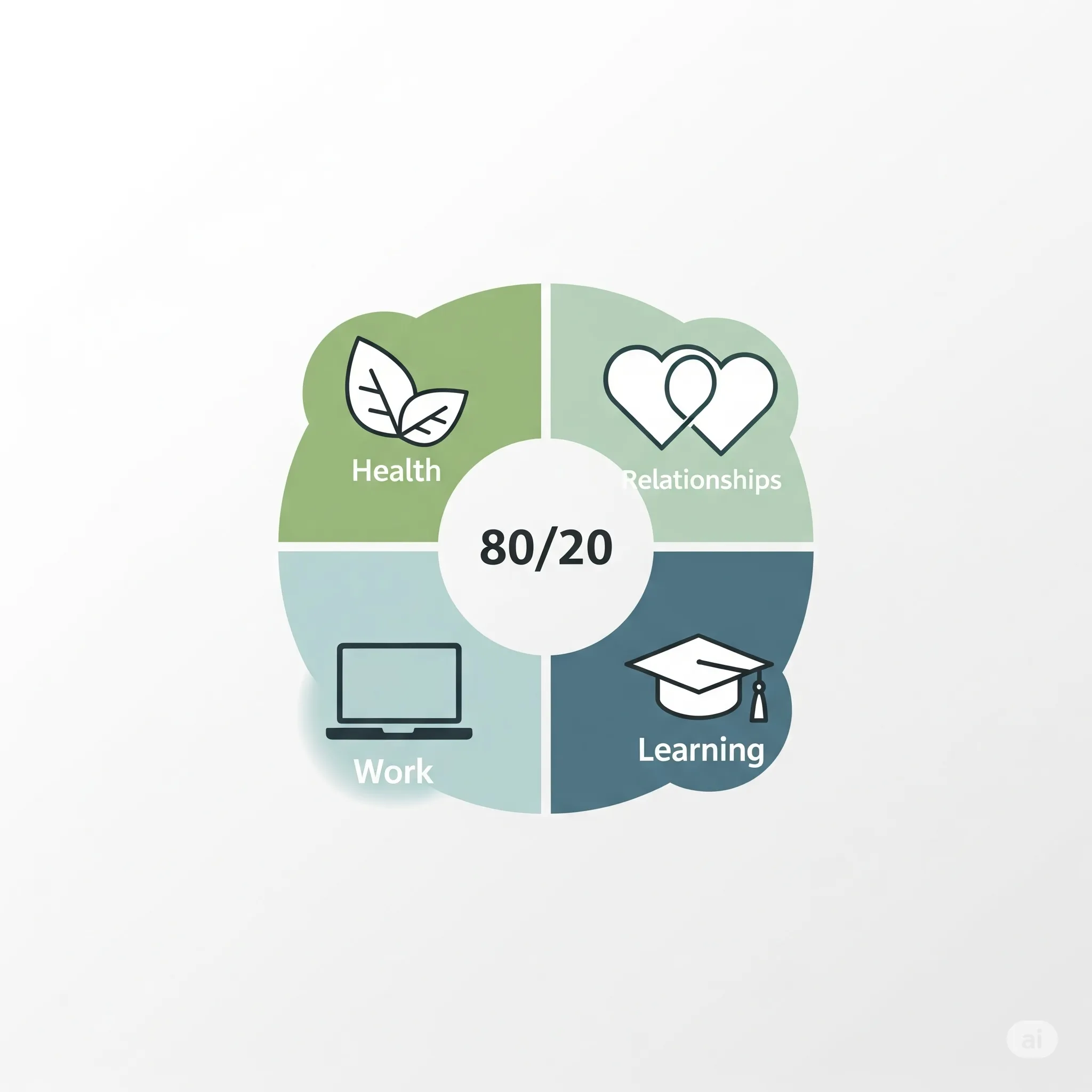There’s a certain relief in realizing you don’t have to do everything. Not well, and not even at all. This is the quiet power behind the 80/20 Rule, also known as Pareto’s Principle—the idea that roughly 80% of outcomes come from 20% of efforts. It’s not a hard-and-fast law of nature, but more of a recurring pattern, one that turns up everywhere from Italian land ownership in the 19th century to modern-day software bugs and stock portfolios[1][2].
When I first learned about this principle, it felt more philosophical than practical. But over time, I’ve come to see it as one of the most useful filters for making decisions—especially when it comes to money and code, two areas where the to-do list can feel endless.
Why the 80/20 Rule Matters to Your Money

If you’ve ever read a personal finance blog, you’ve probably seen tips for everything: budgeting apps, robo-advisors, cashback hacks, side hustles. But the truth is, most financial progress comes from a few foundational habits done consistently well.
The High-Impact Few
According to decades of research, your savings rate, investment fees, and time in the market drive the vast majority of your long-term wealth[3]. These aren’t exciting to optimize—but they matter far more than your grocery budget or the latest ETF trend.
For example, consider portfolio rebalancing. It’s easy to get sucked into over-monitoring your investments. Yet studies show that rebalancing just once or twice a year—focusing only on holdings that have significantly drifted from your target allocation—delivers most of the benefit[4]. I used to tweak my accounts monthly. Now, I spend about 30 minutes twice a year, and my performance hasn’t changed. My free time has.
If you want a tool to help identify those key adjustments without overcomplicating things, I personally recommend using a portfolio rebalancer like this one—it helps automate what really matters while letting you ignore the noise.
Coding Smarter: Where 20% of the Work Makes 80% of the Difference
If you’ve ever been deep in a coding project, you know how quickly time gets eaten up by edge cases, pixel-perfect details, and rabbit-hole refactoring. Yet again, the 80/20 principle applies.
The Bugs That Matter Most
A famous study at IBM found that about 80% of software errors stem from just 20% of the code[5]. Identifying these problem areas early—through error logs, user feedback, or careful analysis—can save disproportionate time and prevent compounding headaches later.
Similarly, in product development, the features users love (or hate) most often come from a small, identifiable subset. Focusing your time here yields far more value than polishing fringe features no one uses.
Personally, I’ve started approaching coding sprints by asking: “What’s the smallest set of tasks likely to make this project feel 80% complete to the user?” Prioritizing this way helps cut through endless busywork disguised as progress.
How to Identify Your Personal 20% (Without Guesswork)
The biggest mistake with the 80/20 rule is assuming you already know your vital 20%. Often, it hides in plain sight—revealed not by intuition, but by data.
In Finance
-
Audit your year: Which investments drove the most gains? Which expenses caused most financial friction? Look at statements, not assumptions.
-
Behavior over transactions: Your most impactful habits likely involve consistency, not complexity—saving automatically, investing regularly, avoiding lifestyle creep.
In Coding
-
Error reports don’t lie: Log analysis often shows recurring hotspots. Fixing these first prevents recurring pain later.
-
Usage data reveals priorities: Which 20% of features account for 80% of user engagement? Focus updates and polish here.

When the 80/20 Rule Backfires
The principle isn’t a free pass to ignore everything outside your current priorities. Sometimes, the overlooked 80% carries hidden risks.
Consider cybersecurity. One neglected corner of old code—no matter how “low priority”—can open catastrophic vulnerabilities. In finance, ignoring small, dormant accounts can expose you to fraud or forgotten fees.
Think of 80/20 as a focusing tool, not a blindfold. It helps allocate energy, not absolve responsibility.
Beyond Finance and Code: Life Lessons from 80/20 Thinking

The magic of Pareto isn’t confined to spreadsheets or IDEs. Once you see it, you start noticing it everywhere:
Health
- A few core habits—adequate sleep, hydration, daily movement—drive most physical and mental well-being. Supplements and workout gadgets? Mostly noise until the basics are in place.
Relationships
- A handful of close connections often provide most of your support, happiness, and stress. Nurturing these bonds delivers outsized emotional ROI.
Learning
- Whether it’s coding languages, chess strategies, or guitar chords, a small set of foundational concepts unlocks most practical competence. Master these first.
The Psychology of Doing Less (But Better)
There’s a quiet guilt that comes with embracing 80/20. It feels lazy, irresponsible even. Shouldn’t success require sweating the small stuff?
Not always. Learning to prioritize leverage over effort is psychologically uncomfortable but practically freeing. It’s not about working less—it’s about working where it counts.
Warren Buffett often says his wealth comes from a “handful of good decisions.” He means it literally: a few core choices shape decades of outcomes[6]. Jeff Bezos built Amazon around similar thinking: focus obsessively on the few inputs (low prices, fast delivery, customer obsession) that drive most results, and ignore distractions[7].
Even in teams, this mindset matters. Leaders who ask, “What’s the 20% of effort driving our best outcomes?” often build more focused, resilient organizations. But beware: overdoing it can demotivate those whose work supports the “invisible 80%.”
Final Thought
The 80/20 rule isn’t a universal truth, but it is a useful lens. Both money and code—and life—benefit from restraint. The small set of efforts that really matter isn’t always obvious. But once you find them, they’re usually enough.
For me, it’s become a quiet discipline: spend less time on what looks busy, more on what moves the needle. The difference isn’t just in outcomes—it’s in how much lighter the work feels.

References
-
Pareto, V. (1896). Cours d'économie politique. Geneva.
-
Koch, R. (2017). The 80/20 Principle: The Secret to Achieving More with Less. Currency.
-
Bogle, J. C. (2007). The Little Book of Common Sense Investing. Wiley.
-
Vanguard. (2020). "Best practices for portfolio rebalancing." Vanguard Research
-
Boehm, B., & Basili, V. (2001). "Software Defect Reduction Top 10 List." IEEE Computer, 34(1), 135-137.
-
Schroeder, A. (2008). The Snowball: Warren Buffett and the Business of Life. Bantam.
-
Stone, B. (2013). The Everything Store: Jeff Bezos and the Age of Amazon. Little, Brown.